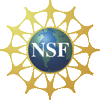
Plants of Tonga Checklist
Project Managers:
Tom A. Ranker
The Tongan archipelago is a group of 150 or more islands and islets of volcanic and coral formation. Of these, only a relatively small number are sufficiently large or topographically suitable for plantations adequate to support populations of any size. Most of the islands are arranged in three main, roughly circumscribed, areas situated in the southern, central, and northern parts of the archipelago known as the Tongatapu, Ha'apai, and Vava'u groups respectively.
The islands of these three groups are arranged in two roughly parallel lines from slightly southwest to northeast in the south Pacific Ocean between 15° and 23° south latitude and 173° and 177° west longitude. To the north, and somewhat remote from the northern Vava'u group, lie the volcanic islands of Niuafo'ou, Tafahi, and Niuatoputapu (Keppel). The islands of the eastern line are the more numerous and are of coral origin. For the most part, they are low, flat, and topographically uninteresting. The western line, extending from the extreme southern, and at present uninhabited island of 'Ata to Niuafo'ou on the north, is of volcanic origin. It includes the island of Kao in the Ha'apai group which rises to a height of about 1,000 meters, the highest of the Tongan islands. Some of the islands for example, Tofua, Fonualei, and Niuafo'ou are still volcanically active. Tongatapu, the largest of the coral islands, with an area of nearly 100 square miles, is very flat and reaches an altitude of scarcely 90 meters at its highest point. On it is located Nuku'alofa, which is the largest town in Tonga and the seat of government.
The islands of these three groups are arranged in two roughly parallel lines from slightly southwest to northeast in the south Pacific Ocean between 15° and 23° south latitude and 173° and 177° west longitude. To the north, and somewhat remote from the northern Vava'u group, lie the volcanic islands of Niuafo'ou, Tafahi, and Niuatoputapu (Keppel). The islands of the eastern line are the more numerous and are of coral origin. For the most part, they are low, flat, and topographically uninteresting. The western line, extending from the extreme southern, and at present uninhabited island of 'Ata to Niuafo'ou on the north, is of volcanic origin. It includes the island of Kao in the Ha'apai group which rises to a height of about 1,000 meters, the highest of the Tongan islands. Some of the islands for example, Tofua, Fonualei, and Niuafo'ou are still volcanically active. Tongatapu, the largest of the coral islands, with an area of nearly 100 square miles, is very flat and reaches an altitude of scarcely 90 meters at its highest point. On it is located Nuku'alofa, which is the largest town in Tonga and the seat of government.
The  symbol opens the species list as an interactive key.
symbol opens the species list as an interactive key.
 symbol opens the species list as an interactive key.
symbol opens the species list as an interactive key.

Development of the Consortium of Pacific Herbaria and several of the specimen databases have been
supported by National Science Foundation Grants (BRC 1057303,
ADBC 1304924
and ADBC1115116).
Data Usage Policy. Continued support provided by the Symbiota Support Hub, a domain of iDigBio (NSF Award #2027654).
Copyright 2015 University of Hawai‘i.


 Research checklists are pre-compiled by biologists.
This is a very controlled method for building a species list, which allows for
specific specimens to be linked to the species names within the checklist and thus serve as vouchers.
Specimen vouchers are proof that the species actually occurs in the given area. If there is any doubt, one
can inspect these specimens for verification or annotate the identification when necessary.
Research checklists are pre-compiled by biologists.
This is a very controlled method for building a species list, which allows for
specific specimens to be linked to the species names within the checklist and thus serve as vouchers.
Specimen vouchers are proof that the species actually occurs in the given area. If there is any doubt, one
can inspect these specimens for verification or annotate the identification when necessary. 